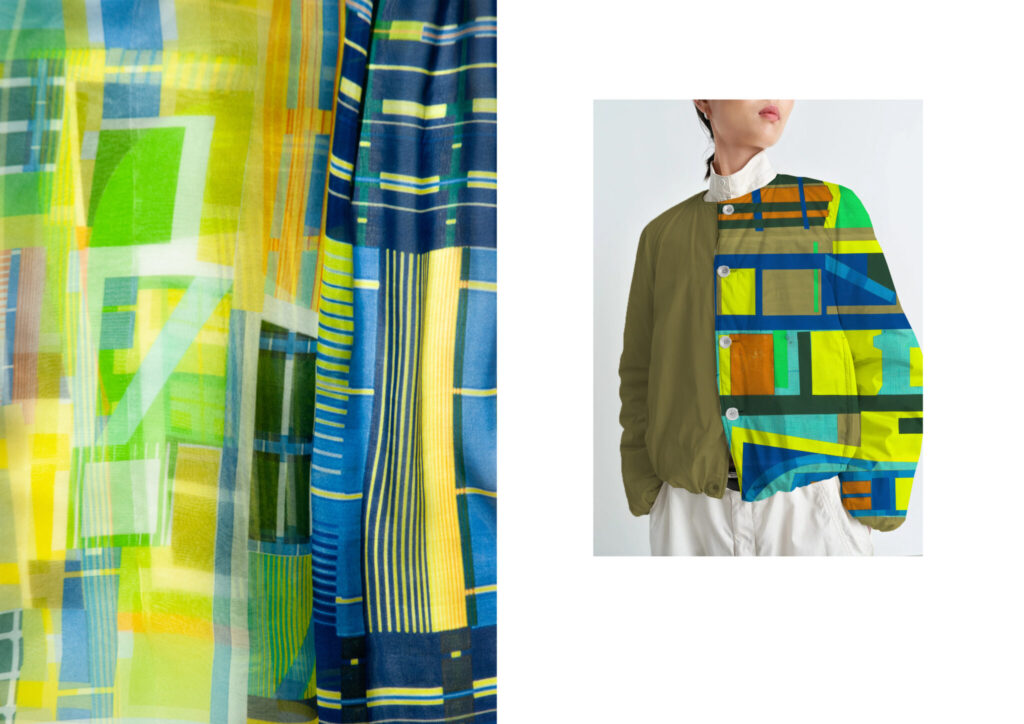School of Design Textile Design
Ruolan Wang


Touchscape-extending project
The extended project- ‘Touchscape’ translates colour gradient patterns into three-dimensional tactile media, supporting wearers with visual impairments to perceive colour and patterns, fostering inclusive interaction. Inspired by Assa Ashuach’s Pelt Origami footwear, it experiments with 2D and 3d elements to explore pattern-structure transformation. By adjusting geometric pattern parameters, four tactile geometries—square, triangle, rectangle, and circle—translate visual graphics into tactile media. Sustainable materials like PHA bioplastic with tea leaves, coffee grounds, and orange peels were used. Experiments in two studios aligned printing parameters and motifs across various fabric types, including perforated, compact, and printed surfaces. The project explored tactile geometric samples balancing visual and tactile perceptions, categorised into tactile-focused and combined tactile-visual designs. The project developed responsible design by prioritising inclusivity and using sustainable, bio-based materials in production.


Choreography of 2D to 3D (collection 1)
Choreography of 2D–3D explores the transformation of two-dimensional shapes and patterns into three-dimensional forms through experiments with coloured filters, movement, 3D drawing based on tectonic principles, and spatial studies inspired by architectural and environmental structures. Influenced by Oskar Schlemmer’s Triadic Ballet and Hella Jongerius’s Breathing Colour, the project investigates the interaction between geometry and colour, and how flat surfaces can evoke three-dimensional visual and perceptual effects.
Focusing on circular geometric patterns, the design examines proportion, colour placement, shape, and texture. A central goal is to improve colour accessibility for visually impaired users by enhancing contrast and increasing colour differentiation, while still retaining the visual pleasure of contrast for wider audiences.
Material and technical processes—including flocking, vinyl layering, laser-cutting, and alternatives to environmentally challenging devoré techniques—were explored to create a sense of volume and depth across both lightweight and heavyweight textiles.
The final outcomes include two seasonal collections (Spring/Summer and Autumn/Winter), each applying layered compositions derived from primary research to reflect spatial interplay between pattern and surface.
This project embodies a responsible design approach that balances aesthetic innovation, inclusivity, and environmental consciousness.


























